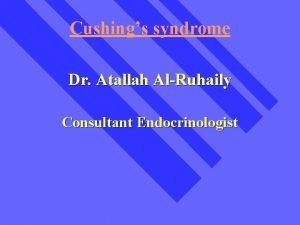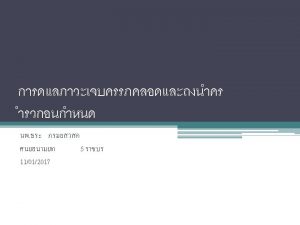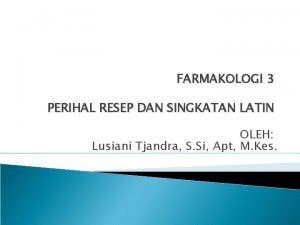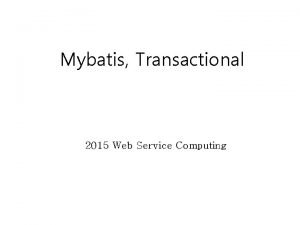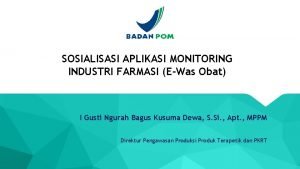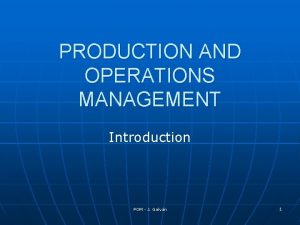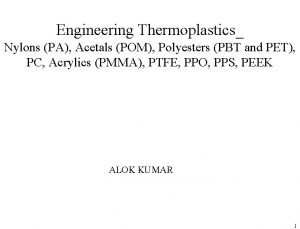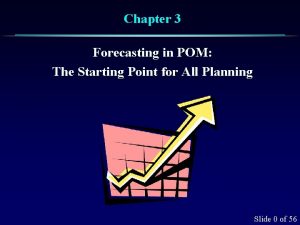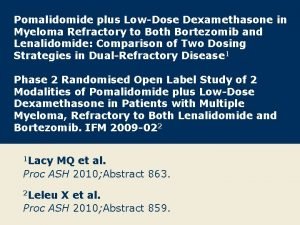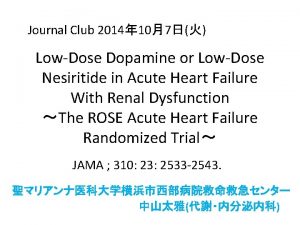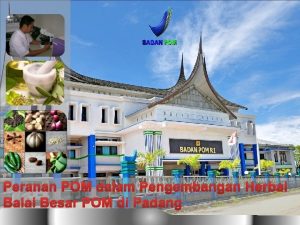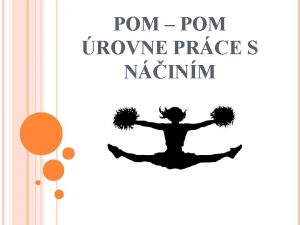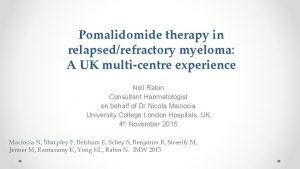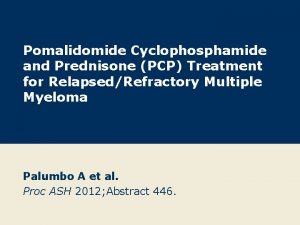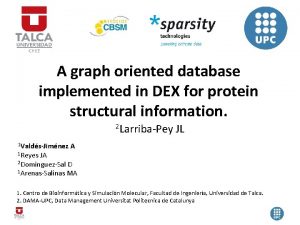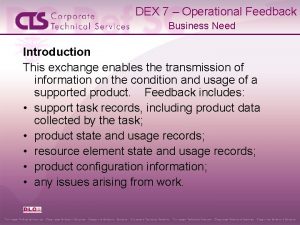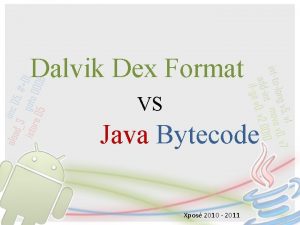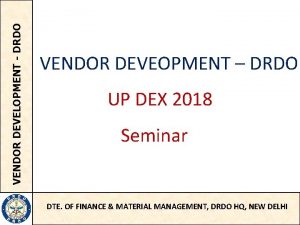Pomalidomide LowDose Dexamethasone POM Lo Dex vs HighDose



















- Slides: 19

Pomalidomide + Low-Dose Dexamethasone (POM + Lo. Dex) vs High-Dose Dexamethasone (Hi. Dex) in Relapsed/Refractory Multiple Myeloma (RRMM): MM-003 Analysis of Patients (pts) with Moderate Renal Impairment (RI)1 Pomalidomide + Low-Dose Dexamethasone (POM + Lo. Dex) vs High-Dose Dexamethasone (Hi. Dex) in Relapsed/Refractory Multiple Myeloma (RRMM): Impact of Cytogenetics in MM-0032 Weisel KC et al. Proc ASCO 2013; Abstract 8527. 2 Goldschmidt H et al. Proc ASCO 2013; Abstract 8528. 1

Pomalidomide + Low-Dose Dexamethasone (POM + Lo. Dex) vs High-Dose Dexamethasone (Hi. Dex) in Relapsed/Refractory Multiple Myeloma (RRMM): MM 003 Analysis of Patients (pts) with Moderate Renal Impairment (RI) Weisel KC et al. Proc ASCO 2013; Abstract 8527.

Background l l l Patients with multiple myeloma (MM) that is refractory to lenalidomide (Len) and bortezomib (Btz) have a poor prognosis. In addition, renal impairment (RI), which is experienced by 20% of patients with MM at diagnosis, is associated with poor outcomes (JCO 2005; 23: 9219). Pomalidomide (POM) in combination with Lo. Dex is effective against RRMM previously treated with Btz and Len, including in patients with RI (Proc ASH 2012; Abstract 4072). Recently, POM was FDA approved for the treatment of MM after ≥ 2 prior therapies, including Len and Btz. Study objective: To determine the efficacy and safety of POM + Lo. Dex versus Hi. Dex for patients with advanced RRMM with or without moderate RI. Weisel KC et al. Proc ASCO 2013; Abstract 8527.

Phase III MM-003 Trial Design 28 -d cycles until PD Eligibility (n = 455) Advanced relapsed or RRMM Failure of Len and Btz No resistance to Hi. Dex in last line of Tx Cr. Cl ≥ 45 m. L/min No Grade ≥ 2 PN R Cr. Cl = creatinine clearance; PN = peripheral neuropathy POM + Lo. Dex (n = 302) POM: 4 mg, d 1 -21 Lo. Dex: 20 mg or 40 mg*, d 1, 8, 15, 22 Hi. Dex (n = 153) Hi. Dex: 20 mg or 40 mg*, d 1 -4, 9 -12, 17 -20 * Lo. Dex or Hi. Dex: 20 mg (>75 years) or 40 mg (≤ 75 years) • The study arms were evaluated with regard to patients with or without moderate RI (baseline Cr. Cl <60 m. L/min versus ≥ 60 m. L/min) • Primary endpoint: Progression-free survival (PFS) Weisel KC et al. Proc ASCO 2013; Abstract 8527.

PFS for Patients without RI (Cr. Cl ≥ 60 m. L/min) Proportion of Patients 1. 0 Median 0. 8 0. 6 POM + Lo. Dex (n = 205) 4. 0 mos Hi. DEX (n = 93) 2. 0 mos HR = 0. 50 P < 0. 001 0. 4 0. 2 0. 0 0 4 8 12 Progression-Free Survival (mos) 16 • Patients with baseline Cr. Cl ≥ 60 m. L/min were more likely to be younger, male and with better performance status than those with baseline Cr. Cl <60 m. L/min. • 55% of patients on the Hi. Dex arm subsequently received POM. With permission from Weisel KC et al. Proc ASCO 2013; Abstract 8527.

PFS for Patients with Moderate RI (Cr. Cl <60 m. L/min) Proportion of Patients 1. 0 Median 0. 8 POM + Lo. Dex (n = 95) 4. 0 mos Hi. DEX (n = 59) 1. 9 mos 0. 6 HR = 0. 47 P < 0. 001 0. 4 0. 2 0. 0 0 4 8 12 Progression-Free Survival (mos) • 42% of patients on the Hi. Dex arm subsequently received POM. With permission from Weisel KC et al. Proc ASCO 2013; Abstract 8527. 16

Overall Survival (OS) by Baseline Renal Function HR by Subgroup HR (95% CI) 0. 74 (0. 56 -0. 97) Subgroup ITT Population POM + Lo. DEX* Hi. DEX* 145/302 82/153 <60 m. L/min Cr. Cl 0. 64 (0. 42 -0. 97) 53/95 39/59 ≥ 60 m. L/min Cr. Cl 0. 84 (0. 58 -1. 22) 91/205 42/93 0. 25 0. 5 1 2 Favoring POM + Lo. DEX Favoring Hi. DEX * Number of events/number of patients With permission from Weisel KC et al. Proc ASCO 2013; Abstract 8527.

Response Rates by Baseline Renal Function Cr. Cl <60 m. L/min POM + Lo. Dex Cr. Cl ≥ 60 m. L/min POM + Lo. Dex (n = 205) Hi. Dex (n = 93) Response (n = 95) Hi. Dex (n = 59) ORR (≥PR) 28% 8% 33% 11% ≥MR 36% 12% 41% 17% ORR = overall response rate; PR = partial response; MR = minimal response • Regardless of baseline renal function, ORR was significantly improved with POM + Lo. Dex versus Hi. Dex (p < 0. 001) Weisel KC et al. Proc ASCO 2013; Abstract 8527.

Grade 3/4 Adverse Events in ≥ 10% of Patients Cr. Cl <60 m. L/min POM + Lo. Dex Cr. Cl ≥ 60 m. L/min POM + Lo. Dex (n = 95) Hi. Dex (n = 59) (n = 203) Hi. Dex (n = 90) 48% 19% 48% 14% 5% 0% 11% 0% Anemia 39% 42% 30% 32% Thrombocytopenia 20% 36% 23% 20% Infections 33% 25% 30% 23% DVT/PE 0% 0% 2% 0% PN 1% 2% 2% 1% 12% 10% 7% 10% Event Neutropenia FN Discontinuations FN = febrile neutropenia; DVT/PE = deep vein thrombosis/pulmonary embolism Weisel KC et al. Proc ASCO 2013; Abstract 8527.

Author Conclusions l l l This study demonstrates that poor renal function (baseline Cr. Cl <60 m. L/min but ≥ 45 m. L/min) does not affect the efficacy and safety of POM + Lo. Dex in RRMM. Similar to the overall study population, POM + Lo. Dex extended PFS compared to Hi. Dex for patients with RRMM in both renal function subgroups. POM + Lo. Dex improved OS in the ITT population and in patients with moderate RI. – ORR was similar between renal subgroups The tolerability of POM + Lo. Dex was acceptable and comparable across subgroups, with few discontinuations due to adverse events. Prescribing information for POM will be updated with dose recommendations for patients with RI after the completion of the ongoing MM-008 trial. Weisel KC et al. Proc ASCO 2013; Abstract 8527.

Pomalidomide + Low-Dose Dexamethasone (POM + Lo. Dex) vs High-Dose Dexamethasone (Hi. Dex) in Relapsed/Refractory Multiple Myeloma (RRMM): Impact of Cytogenetics in MM-003 Goldschmidt H et al. Proc ASCO 2013; Abstract 8528.

Background MM harboring cytogenetic abnormalities such as del 17 p and t(4; 14) is associated with poor outcomes. l Patients with MM who have exhausted treatment with bortezomib (Btz) and lenalidomide (Len) have a poor prognosis and limited effective treatment options. – Presence of high-risk cytogenetics also predicts shorter survival (Leukemia 2012; 26: 149) l POM + Lo. Dex demonstrated clinical efficacy in patients with RRMM and high-risk cytogenetics previously treated with Btz and/or Len (Clin Lymphoma Myeloma Leuk 2013; 13: S 44). l Study objective: To prospectively examine the efficacy and safety of POM + Lo. Dex versus Hi. Dex for patients with RRMM in the MM-003 trial meeting the modified high-risk cytogenetic criteria, defined as presence of del 17 p and/or t(4; 14). l Goldschmidt H et al. Proc ASCO 2013; Abstract 8528.

PFS for Patients with Standard-Risk Cytogenetics Proportion of Patients 1. 0 Median PFS 0. 8 0. 6 POM + Lo. Dex (n = 148) 4. 2 mos Hi. DEX (n = 72) 2. 3 mos HR = 0. 50 P < 0. 001 0. 4 0. 2 0. 0 0 4 8 12 Progression-Free Survival (mos) 16 • 56% of patients on the Hi. Dex arm subsequently received POM. With permission from Goldschmidt H et al. Proc ASCO 2013; Abstract 8528.

PFS for Patients with Modified High-Risk Cytogenetics Proportion of Patients 1. 0 Median PFS 0. 8 0. 6 POM + Lo. Dex (n = 77) 3. 8 mos Hi. DEX (n = 35) 1. 1 mos HR = 0. 46 P < 0. 001 0. 4 0. 2 0. 0 0 4 8 12 Progression-Free Survival (mos) • 43% of patients on the Hi. Dex arm subsequently received POM. With permission from Goldschmidt H et al. Proc ASCO 2013; Abstract 8528. 16

Overall Survival (OS) by Cytogenetic Risk Category HR by Subgroup HR (95% CI) 0. 74 (0. 56 -0. 97) Subgroup ITT Population POM + Lo. DEX Hi. DEX 145/302 82/153 Modified High-Risk Cytogenetics 0. 69 (0. 41 -1. 16) 47/77 21/35 Standard-Risk Cytogenetics 0. 85 (0. 56 -1. 27) 68/148 35/72 0. 25 0. 5 Favoring POM + Lo. DEX 1 2 Favoring Hi. DEX With permission from Goldschmidt H et al. Proc ASCO 2013; Abstract 8528.

Response Rates by Cytogenetic Risk Category Modified high risk POM + Lo. Dex Standard risk POM + Lo. Dex (n = 148) Hi. Dex (n = 72) Response (n = 77) Hi. Dex (n = 35) ORR (≥PR) 23% 6% 34% 7% ≥MR 30% 11% 44% 15% ORR = overall response rate; PR = partial response; MR = minimal response • Regardless of cytogenetic risk category, ORR was significantly improved with POM + Lo. Dex versus Hi. Dex (p < 0. 001) Goldschmidt H et al. Proc ASCO 2013; Abstract 8528.

Grade 3/4 Adverse Events in ≥ 10% of Patients Modified high risk POM + Lo. Dex Standard risk POM + Lo. Dex (n = 76) Hi. Dex (n = 35) (n = 147) Hi. Dex (n = 70) 54% 31% 50% 14% 9% 0% 12% 0% Anemia 46% 31% 33% Thrombocytopenia 28% 43% 24% 19% Infections 28% 26% 38% 20% DVT/PE 0% 0% 2% 0% PN 3% 0% 1% 3% Discontinuations 7% 9% 10% 8% Event Neutropenia FN FN = febrile neutropenia; DVT/PE = deep vein thrombosis/pulmonary embolism Goldschmidt H et al. Proc ASCO 2013; Abstract 8528.

Author Conclusions l l l Regardless of the cytogenetic risk category, treatment with POM + Lo. Dex significantly prolonged PFS compared to Hi. Dex. Treatment with POM + Lo. Dex improved overall survival compared to Hi. Dex, independent of cytogenetic status. The overall response rate was similar between cytogenetic groups. Consistent with previous reports, treatment with POM + Lo. Dex was generally well tolerated, with manageable adverse events. POM + Lo. Dex could be considered as a treatment option for patients with MM who have exhausted Btz and Len treatment options, regardless of cytogenetic status. Goldschmidt H et al. Proc ASCO 2013; Abstract 8528.

Investigator Commentary: Analysis of the MM-003 Trial of POM + Lo. Dex versus Hi. Dex in Advanced RRMM with or without Moderate Renal Impairment The efficacy of POM and Len may be superimposable. The appropriate dosing is the issue for POM, so one should follow the dosing recommendations. I would administer POM to a patient with RRMM experiencing renal impairment. A creatinine-clearance cutoff of 60 m. L/min does not significantly change clinical outcomes. We need to investigate dose reduction in patients with clearance of less than 30 m. L/min. I would carefully check hematologic toxicities and would probably reduce the dose of POM if those were too high. However, data to support this approach are not presently available. Analysis of the MM-003 Trial According to Cytogenetic Status High-risk MM conveys worse prognosis. The observed benefit with POM for patients with advanced RRMM with high-risk cytogenetics is comparable to that with Btz. In fact, I don’t believe a drug exists that is able to overcome high-risk disease. It is possible to rescue some patients with intermediate-risk disease with an intense regimen such as Cy. Bor. D or Btz. Interview with Antonio Palumbo, MD, August 12, 2013


